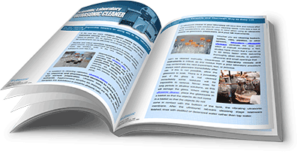Posts by Rachel Kohn
ICP-OES Spray Chamber Maintenance with an Ultrasonic Cleaner
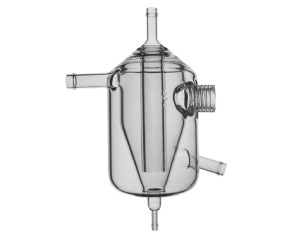
Inductively Coupled Plasma Optical Emission Spectrometers are costly and require regular maintenance to assure accurate performance. An ultrasonic cleaner is recommended for ICP-OES spray chambers and we share here two approaches, one employed by a user and the other recommended by a distributor. Labs using this equipment should above all follow the recommendations of their supplier but can look to Tovatech for ultrasonic cleaning equipment that meets these recommendations.
Ultrasonic Cleaning ICP-OES Spray Chambers
An ultrasonic cleaner is recommended because spray chambers have complex shapes making it difficult to remove contaminants that deposit during ICP-OES operation. Cleaning is provided by cavitation action, or the implosion of minute bubbles in an ultrasonic cleaning solution, on all chamber surfaces while immersed in the solution. This action is produced by generator-powered ultrasonic transducers bonded to the bottom of a stainless steel tank. It quickly and safely blasts away … Read the rest
How to Safely Clean with Acid in an Ultrasonic Cleaner
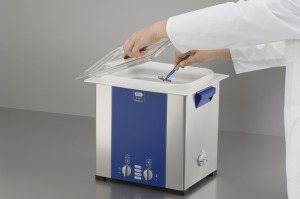
There is a wide variety of ultrasonic cleaning solutions on the market – each formulated for specific cleaning operations in an ultrasonic cleaner. These solutions are generally classified as alkaline (high pH), neutral, or acidic (low pH). Most acidic ultrasonic cleaning solution concentrates are biodegradable and when diluted according to instructions can be used in stainless steel ultrasonic cleaning tanks such as the Elmasonic series available from Tovatech.
Protecting Staff and Ultrasonic Cleaner Tanks from Highly Acidic Baths
There are exceptions, and an important one is if you must use corrosive low pH solutions such as nitric, sulfuric, formic, or hydrofluoric acid in an ultrasonic cleaner. Without proper protection these solutions can wreak havoc on your ultrasonic cleaner and the investment it represents.
Solving this problem is twofold and while relatively simple requires a procedure that must be part … Read the rest
Improving Temperature Stability in Scientific Freezers
Modern scientific freezers are designed to provide researchers with tight temperature control – an essential feature to avoid damage to costly and sometimes irreplaceable samples and specimens. Most laboratory freezers feature alarm systems that alert personnel should the internal temperature fluctuate above or below that set on the thermostat. Many models also have door-mounted digital displays showing the temperature of the contents.
A major threat to temperature uniformity is the open scientific freezer door when researchers retrieve or replace samples. Minimizing the intrusion of ambient air is achieved when the internal cabinet is subdivided into compartments fitted with slide out wire baskets equipped with clear plastic fronts. While refrigerated air circulates freely throughout the unit only the target basket, not the entire stock, is exposed to ambient air. This feature is found on the SA6FManDTMD scientific freezer available from Tovatech. It has an advanced alarming system that sounds if fluctuations … Read the rest
Using an Ultrasonic Cleaner in the Home
Mention an ultrasonic cleaner to the cognoscenti and chances are they’ll think in terms of cleaning engine parts, medical instruments or other industrial applications for this highly efficient way of removing dirt, grease and other contaminants from all types of surfaces.
But ultrasonic cavitation action – the implosion of countless minute bubbles that quickly and safely strip away these contaminants – is also finding increasing application in the home. The action penetrates cracks and crevices unreachable by hand scrubbing and accomplishes the cleaning process in minutes. Residential uses for ultrasonic cleaners include
- Jewelry
- Eyeglasses
- Dentures
- Manicure and pedicure equipment
- Razors, combs and brushes
- Flatware
- Small tools
- Certain minerals
- Coinage
and other small products that can be safely wetted in an ultrasonic cleaning solution.
Selection Tips for a -40˚C Lab Freezer
Laboratory freezers and scientific freezers play an important role in product protection and testing. This applies to the healthcare/pharmaceutical industry and for testing mechanical components under extreme cold temperature conditions. Lab freezers are manufactured to operate most efficiently at specific temperatures required by research and product development personnel.
Selecting the correct scientific freezer temperature depends on several factors including government, professional association and industry standards. That’s why Tovatech offers a wide variety of low temperature freezers such as the Nor-Lake Premier -40˚C model.
Temperatures, Costs and other Lab Freezer Specification Factors
While “freezing” suggests 0˚C (32˚F) specifications may require much lower temperatures. Units are designed to maintain the required temperature in the most efficient manner. The Norlake Premier NSXF221 low temperature laboratory freezer, for example, is factory set to -40˚C although operators can control settings from -30˚C. Keep in mind that the colder the capability the more costly the freezer, … Read the rest
How MD Offices Save Space with a Compact Vaccine Refrigerator
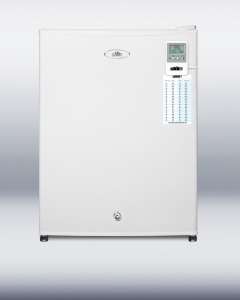
Rules and recommendations abound concerning vaccine storage with strict temperature control usually heading the list and an awareness of expiration dates following closely behind. For medical doctors engaged in family practice vaccine refrigerators are a must. The goal is to provide safe storage in a vaccine refrigerator sized to meet the inventory needs of practices working with tight budgets. Compact undercounter or tabletop models on the market, such as the 1.6 cubic foot FFAR22LTMED, 2.5 cubic foot FF28LTMED, and 2.8 cubic foot FF32LTMED series available from Tovatech, provide economically priced solutions for vaccine refrigeration needs.
Designed for Tight Temperature Control
With footprints of approximately 22 inches or less these compact medical refrigerators have product protection and monitoring features matching those found on full-sized models. Examples include:
- Temperature control from 2˚ to 8˚C
- Hospital-grade “green dot” power cords
- Audible temperature warning alarms
- Digital thermostats with
How to Calibrate a Moisture Balance
Laboratory-scale moisture analyzers use halogen or infrared heaters as part of a procedure to determine moisture content in products to ensure they are in compliance with federal or industry regulations. As with all precision analytical scales and balances accuracy is a paramount requirement for a moisture analyzer.
In the case of moisture analyzers, two calibration processes must be performed: one for weighing accuracy and one for temperature accuracy.
Why Moisture Analyzers Must be Calibrated
It takes very little in the way of disturbances to impact the accuracy of a moisture analyzer balance. For example, the effect of gravity is not the same everywhere on Earth, meaning that newly purchased analyzers must be calibrated on location before being used.
Moreover, changing environmental conditions in the laboratory or wherever moisture analyzers are used can impact accuracy, as can moving a unit to another location, even if it’s only to another worktable. The … Read the rest
Buying Tips for Veterinarian Scales
Weighing animals in veterinarian clinics is challenging because few if any of the patients have the patience to remain still on the weighing platform. Since weight gain or loss is very much a part of the exam, vets and their assistants need all the assistance they can get in securing accurate weight readings. Platform scales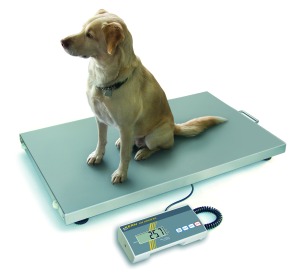 such as the Kern EOB, EOE and EOS series available from Tovatech are ideally suited for this requirement because they are designed to compute an accurate stable weight even though the animal does not stand quietly on the weighing plate.
such as the Kern EOB, EOE and EOS series available from Tovatech are ideally suited for this requirement because they are designed to compute an accurate stable weight even though the animal does not stand quietly on the weighing plate.
An Animal Weighing System That’s Easy to Use
With only 4 programming keys on the display device these animal weighing scales are a cinch to operate: on/off, hold, unit (pounds or kilograms) and tare. It’s the “hold” key that’s key to the animal weighing operation.
With Fido firmly on the easily cleaned stainless steel weighing … Read the rest
How Basket Design Impacts Ultrasonic Cleaner Efficiency
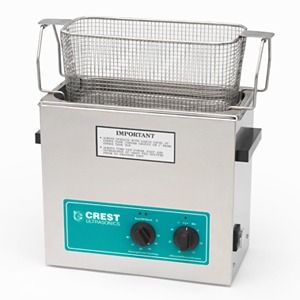
Baskets and trays used to support products in an ultrasonic cleaner solution have an effect on ultrasonic cleaning efficiency. Ultrasonic cleaner baskets and trays are necessary to keep the products being cleaned from coming in contact with the tank bottom and walls. The design of the ultrasonic cleaner basket or tray should have minimum impact on the level of ultrasonic cavitation. This is because anything placed in an ultrasonic cleaner bath, including the baskets, affects cavitation action by absorbing ultrasonic energy. The goal is selecting a basket or tray design that helps maximize cavitation action on parts being cleaned.
Comparing Basket Design
The October 2005 issue of Managing Infection Control reported on a study of four basket designs and how the design impacted ultrasonic cleaner efficiency. While there are several tests to evaluate the efficiency of an ultrasonic cleaner, including the aluminum … Read the rest
Understanding Temperature Cycling
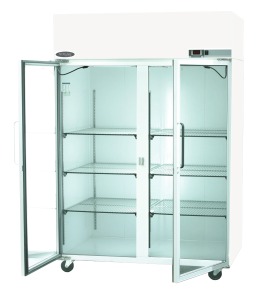
Setting and maintaining precise temperatures in lab refrigerators and lab freezers is crucial if your research or manufacturing facility subscribes to cGLP and cGMP. Costly pharmaceuticals and vaccines can quickly be compromised if laboratory refrigerators and laboratory freezers are not carefully monitored. A key area of concern is temperature cycling during defrosting cycles in these storage units and how this must be accommodated by established standard operating procedures in your facility.
Defrosting Described
Defrosting by definition indicates a temperature fluctuation, whether in a lab freezer or lab refrigerator. Defrosting cycles can be manual (manual defrost) or automatic (auto-defrost).
A manual defrost freezer functions by circulating refrigerant in the walls of the unit. Products stored next to the walls will likely be colder than products stored toward the middle. This temperature gradient should be taken into account in your standard operating … Read the rest
